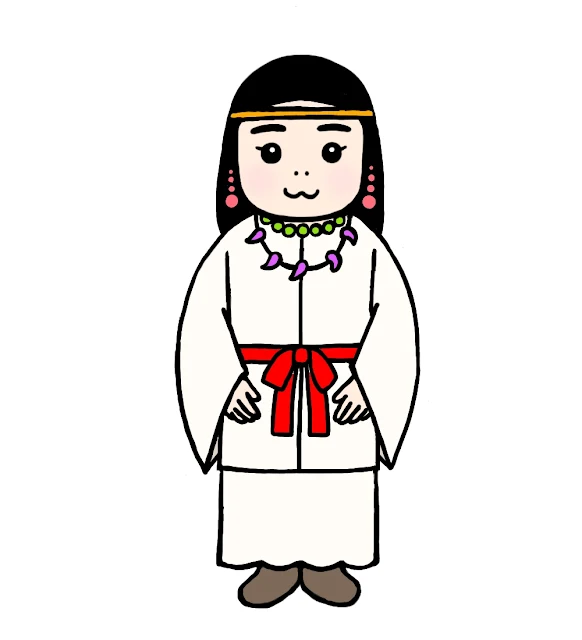
Izanami, also known as Izanami-no-Mikoto, is a cornerstone figure in Japanese mythology.
She embodies a fascinating duality, serving as both the goddess of creation and the goddess of death.
This inherent contradiction lies at the heart of her story, which is intricately woven into the formation of the Japanese islands, the birth of numerous deities, and the establishment of the underworld.
{tocify} $title={Table of Contents}
The Creation Myth and Izanami's Descent
According to Japanese creation myths, particularly the Kojiki (Record of Ancient Things) and the Nihon Shoki (Chronicles of Japan), Izanami and her husband, the god Izanagi, were instrumental in bringing forth the Japanese archipelago.
Standing upon the Floating Bridge of Heaven (Ama-no-Hashidate), they churned the primordial chaos with a spear, gradually solidifying the landmasses that would become Japan.
Following this act of creation, Izanami and Izanagi gave birth to a multitude of deities who embodied various aspects of nature - mountains, rivers, winds, and more.
These divine offspring played a crucial role in shaping and populating the newly formed islands.
However, tragedy struck during the birth of their fire god, Kagutsuchi.
The inferno that emerged from Izanami's womb inflicted fatal burns upon her.
Even in death, Izanami's body continued to give birth, albeit to monstrous deities born from her decaying form.
Disgusted and horrified, Izanagi slew these offspring, but his grief for Izanami was immense.
Determined to bring his wife back from the underworld, Yomi-no-Kuni, Izanagi ventured into the land of the dead.
He found Izanami, but her form was now grotesque and corrupted.
Recoiling in terror, Izanagi fled the underworld, sealing the entrance with a massive boulder.
Enraged by his abandonment, Izanami vowed to take a thousand lives each day.
In response, Izanagi countered that he would give birth to a thousand and five lives each day.
This exchange marked the establishment of the cycle of life and death.
Meanings Behind the Names and Titles
The name "Izanami" itself holds multiple interpretations.
Some scholars posit that it derives from the root word "izana," meaning "to invite" or "to beckon," which aligns with her role as the one who welcomes souls into the underworld.
The suffix "-mi" carries an honorific connotation. Alternatively, others believe "na" might simply be a particle rather than a suffix.
Regardless of the exact etymology, Izanami's name undoubtedly reflects her association with the afterlife.
Beyond her primary name, Izanami holds several other titles that shed light on her multifaceted nature.
Kunado no Kami translates to "the deity of the land," highlighting her role in the creation of Japan.
Yomotsu Okami signifies "the great deity of Yomi," emphasizing her dominion over the underworld.
The Mystery of Izanami's Resting Place
The exact location of Izanami's burial site remains a subject of debate and local legends.
The Kojiki suggests she is buried at the foot of Mount Hiba, on the border of present-day Shimane and Hiroshima prefectures.
Another legend points to her resting place in the village of Arima, within the Kumano region of Mie Prefecture.
These contested locations add to the mystique surrounding this revered goddess.
Izanami's Enduring Legacy
Izanami's story transcends the realm of mere mythology.
It serves as a foundation for understanding Japanese cultural traditions and beliefs about death and the afterlife.
Shrines dedicated to her, such as the Kumesekibetsu Shrine near Mount Hiba, are visited by those seeking blessings related to childbirth and safe passage from the world of the living.
The tale of Izanami and Izanagi also resonates with broader themes found in creation myths around the world.
It explores the universal concepts of life, and death, the delicate balance between order and chaos, and the enduring struggle between love and loss.
Izanami's complex and multifaceted nature continues to capture the imagination and inspire artists, writers, and spiritual seekers to this day.

Post a Comment